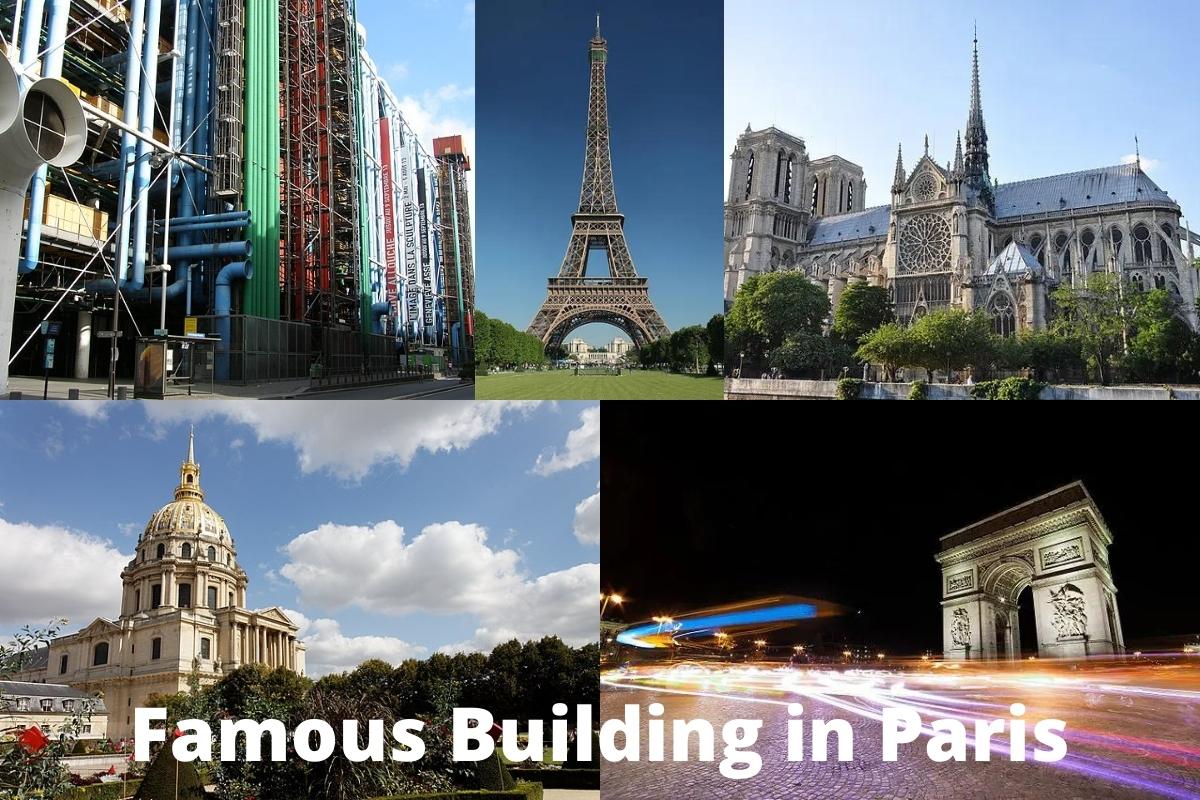Paris is well-known for being one of the most artistic and distinct cities in Europe, as well as the rest of the world.
Throughout the centuries, the French capital city was home to some of the most influential art movements that shaped cultures for hundreds of years.
The buildings in Paris are often overlooked in their architectural beauty, but the city is full of magnificent structures, statues and buildings that are a testament to some of the world’s greatest architects and designers.
In this article, we’ll examine in greater detail 10 of the most famous buildings in Paris and look closely at the architects who were responsible for designing them.
Famous Buildings in Paris
1. Eiffel Tower
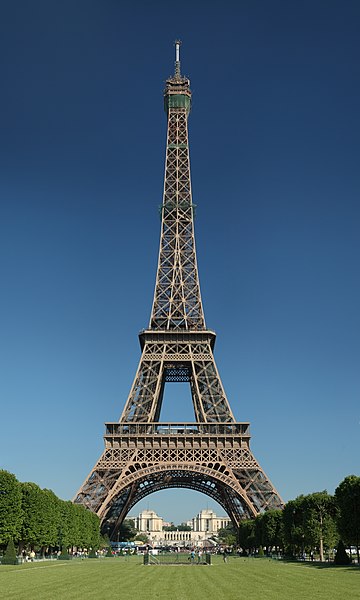
There is no other building more easily recognized and iconic in Paris than the Eiffel Tower.
This massive, steel tower was erected more than a century ago and has since become one of the most popular tourist destinations in Paris, drawing more than 7 million visitors each year.
The Eiffel Tower was designed by Steven Sauvestre, who was a prominent French architect during the late 19th century.
The tower’s foundation began to be laid in the summer of 1887 and crews worked for more than two years to properly build the lower base and foundation of the Eiffel Tower.
The foundation was, by far, the most important part of the project as it was meant to hold many tons of steel in the tower itself.
The Eiffel Tower stands at 330 meters, or 1,083 feet in height and visitors to the city of Paris consider this to be one of the most iconic buildings in France and Europe.
The tower derives its name from Gustave Eiffel, who was the lead engineer on the tower project and also the owner of the company that was in charge of its construction.
2. Louvre Museum
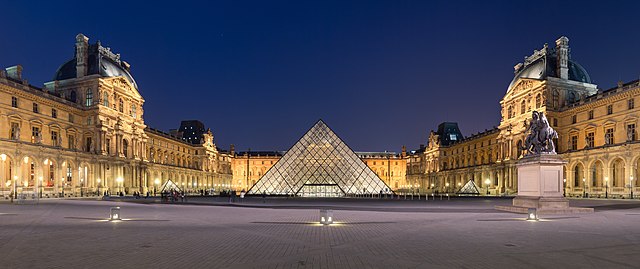
Paris is home to one of the most famous art museums in the world and the contents inside are easily among the most incredible artworks in human history. The Louvre Museum is a large structure that is the most well-known art museum in the city.
The Louvre Museum, which is often referred to simply as “the Louvre,” was a name that was derived from an ancient French word for a door or entrance.
Also Read: Famous French Landmarks
The Louvre Museum was designed by Pierre Lescot, Louis Le Vau and Claude Perrault, who were all some of the most well-known architects and design experts during the late 18th century.
The building’s foundation was laid in the late 1790’s in the place of what was once a palace building that was designed by architect Jacques Lemercier during the reign of Louis XIII.
The museum was finished in 1793 and opened that same year with some of the most well-known paintings from the Catholic Church and the royal palace in this time period.
Today, the Louvre Museum draws many millions of visitors each year and displays more than 35,000 individual works of art, yet the museum contains more than 600,000 different works in its vaults and storage rooms.
3. Arc de Triomphe
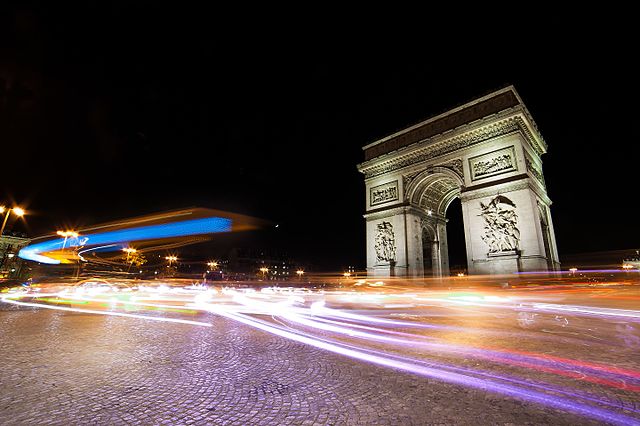
One of the most iconic buildings in Europe is Paris, France’s Arc de Triomphe. This monumental structure sits at the western end of the Champs-Élysées at the middle of the Place Charles de Gaulle.
The Arc de Triomphe translates to the “Triumphal Arch of the Star” in English and has been a major landmark in Paris since it was built during the early 19th century.
The structure was designed by Jean Chalgrin, who was one of the most notable architects in France during the late 18th and early 19th centuries.
Chalgrin worked alongside Louis-Étienne Héricart de Thury, who is remembered as a renaissance man due to his involvement in literature, politics, engineering and many other areas of interest.
Construction began on the Arc de Triomphe during the summer of 1806 and it would take three decades before the structure was finished and dedicated in 1836.
The Arc de Triomphe is well-known as one of the most recognized and iconic buildings in Europe and has since been features in many films, photographs and other works over the years since it was constructed.
4. Notre Dame de Paris
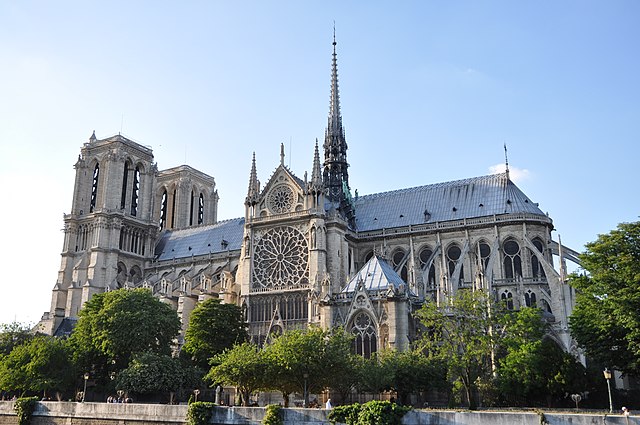
Many people consider the Notre Dame de Paris cathedral to be one of the Catholic Church’s most famous cathedral’s in the world. This structure is also one of the most famous buildings in France due to its immaculate design and detail in the church’s interior and exterior.
The Notre Dame de Paris was designed by a variety of different architects over the centuries since its work began under Bishop Maurice de Sully in 1163 A.D.
Also Read: Famous French Cathedrals
Most of the construction on the Notre Dame de Paris was finished by 1260 A.D., but there have been numerous renovation and upgrades done to the structure over the course of the last 800 years.
The Notre Dame de Paris is located on the Île de la Cité, which is a small island that sits in the middle of the Seine River.
A fire destroyed a massive section of the roof and interior of the Notre Dame de Paris in 2019, causing irreparable damage to some of the masterful historic architecture that had adorned the building’s interior and exterior for many centuries.
Crews have started the process of rebuilding much of the sections that were damaged in the fire and the project is expected to be done in the next decade, according to officials from the Catholic Church and Paris.
5. Sacré-Cœur, Paris
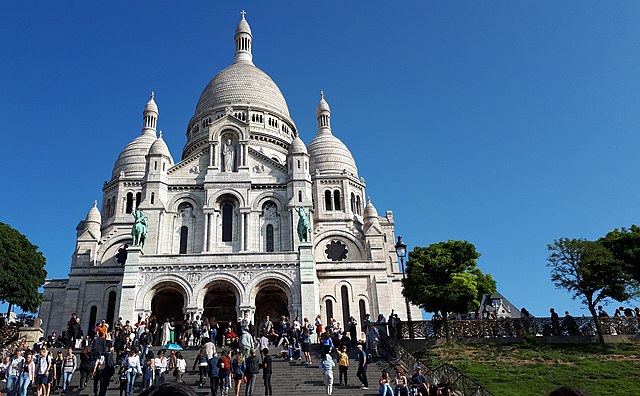
Second the the Notre Dam de Paris, the Sacré-Cœur, Paris is widely recognized as one of the most beautiful churches in the French capital city and the surrounding area.
The Sacré-Cœur, Paris is located at the butte of Montmartre and is said to be second to only the Eiffel Tower in terms of the number of visitors that travel to the structure each year.
A contest was held in the late 1800’s to encourage some of the greatest designers and up-and-coming architects to participate. More than 70 designs were submitted and a group of judges chose a design that was produced by Paul Abadie, who was a little-known architect.
Abadie’s design was one that most critics and historians describe as being of Neo-Byzantine-Romanesque style.
A groundbreaking ceremony was held in the summer of 1875 and the project would drag on for nearly 40 years before it was finally completed in 1914.
The incredible design of the Sacré-Cœur, Paris, as well as the building’s solid-white exterior is mostly why so many visitors travel to the church each year.
6. Les Invalides
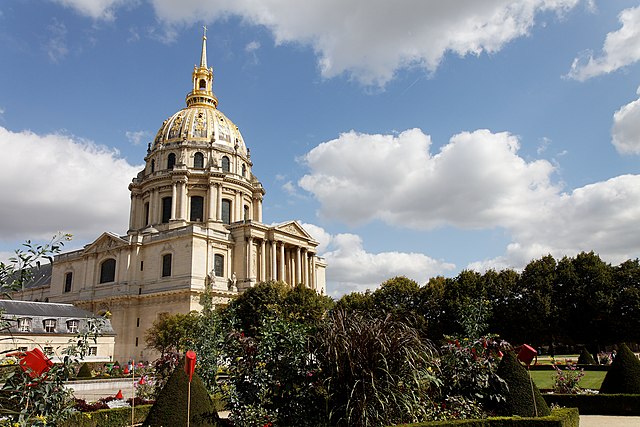
One of the most historically-rich buildings in Paris is known as Les Invalides. This sprawling complex of buildings and other structures is one that was initially built under the leadership of Louis XIV and has since become a major tourist attraction for anyone visiting Paris.
The buildings were designed by Libéral Bruant and Jules Hardouin-Mansart, both well known architects who are credited with designing some of the city’s most historic structures from the 17th century.
Construction on the Les Invalides began in 1671 and the building was initially meant to serve as a hospital or home for elderly or disabled soldiers. The Les Invalides building was finished in 1706 and it eventually grew into a massive church and chapel complex that was used by the Catholic Church in Paris for many decades.
The structure’s dome, which is known as the Dome de Les Invalides, is the most visually-stunning parts of this massive collection of architectural wonders.
Today, it serves as a major tourist destination and contains an incredible amount of sculptures, architectural works and artistic products that encompass many decades of France’s history.
7. Palais Garnier
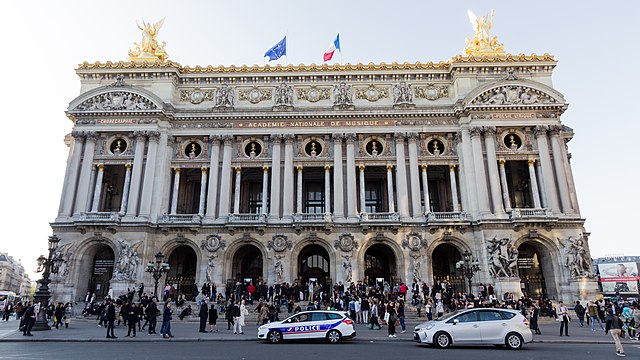
Palais Garnier is another historically significant building that is one of the most famous structures in Paris, France. This large, elaborately-designed structure was established as a massive opera house during the mid-to-late 19th century.
The Palais Garnier was designed by Charles Garnier, who is recognized as one of the most prominent French architects from this era.
Construction began on the Palais Garnier in 1861 and the project would drag along for the first few years before Emperor Napoleon III insisted that the building be finished promptly. It was completed in 1875 and opened later that same year as one of the most anticipated opera houses in Europe.
The building’ interior and exterior are both designed according to the Baroque style of architecture, but it also incorporates elements from the Italian Renaissance and the Neoclassical movement.
Today, the Palais Garnier is capable of holding nearly 2,000 visitors in its largest opera hall and it still serves as one of the most historic and famous opera houses in the world.
8. Centre Pompidou
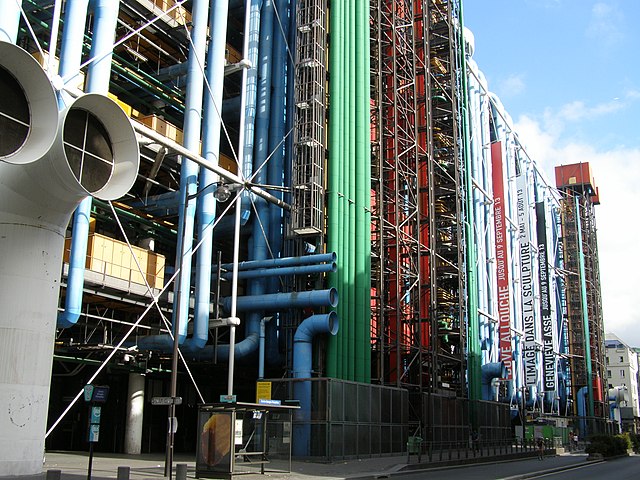
Among the many different buildings in Paris that are built according to the Modernist style of architectural design, the Centre Pompidou is arguably the most well-known.
This building is a massive public library, modern art museum and also a center for music and research into acoustics and sound.
The building was designed by some of the most brilliant minds in the Modernist style that includes Su Rogers, Richard Rogers, Renzo Piano and Gianfranco Franchini, as well as others who worked alongside these individuals. Construction on the project began in 1971 and took more than 5 years before it was finally completed in 1977.
Over the course of the last 40 years since the building was completed, the Centre Pompidou has become one of the most-visited destinations in Paris.
The massive building and its many complexes of partitions and rooms are all part of the nearly 1,000,000 square feet of floor space that the Centre Pompidou offers.
9. Luxembourg Palace
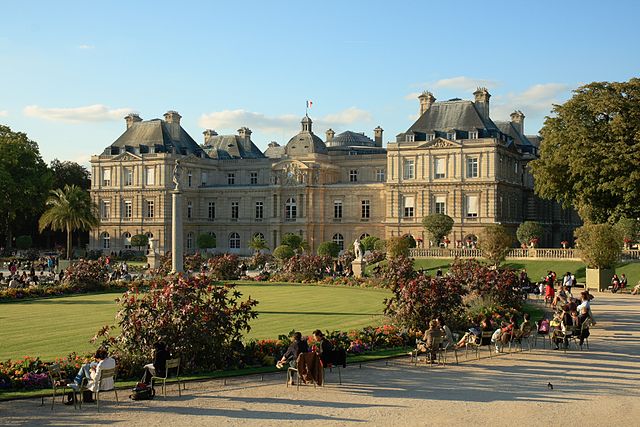
Europe is one of the few continents that is full of various historical structures that were used as royal palaces and castles over the last several centuries.
There are numerous ancient structures in and around Paris, but one of the most famous of these buildings is the Luxembourg Palace. This elegant architectural masterpiece sits along the rue de Vaugirard and the massive courtyard near the palace.
The Luxembourg Palace was designed by Jean Chalgrin and Alphonse de Gisors, who were both among the most reputable architects from the 17th century. Work began on the Luxembourg Palace in 1615 and the project was overseen by King Louis XIII for its duration.
The Luxembourg Palace was finished in 1645 and served as a residence for the regent Marie de’ Medici, who was the mother of King Louis XIII.
Today, the Luxembourg Palace is one of the most popular tourist destinations in Paris and has experienced many different renovation and maintenance projects over the many years since it was built in order to maintain its original beauty and grandeur.
The palace has been features in a number of films, television shows, photographs and many other works in the last century.
10. Musée d’Orsay
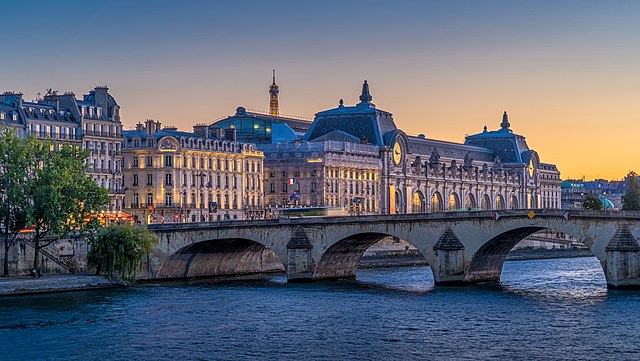
Our list of the most famous buildings in Paris wouldn’t quite be complete without mentioning the Musée d’Orsay. This majestic structure sits along the southern bank of the Seine in Paris and has served a variety of different purposes over the years since it was established.
The Musée d’Orsay was designed by three prominent architects during the early 20th century—Lucien Magne, Émile Bénard and Victor Laloux.
The building initially served as a railway station that was known in Paris as Gare d’Orsay, which was built during the late 19th century and opened in 1900.
It was the first electricity-powered train station in the world and was opened just before Paris hosted the 1900 Exposition Universelle.
After use of the the railways in Paris declined among its local residents and tourists visiting the city, the Musée d’Orsay was turned into a museum that has since become one of the most popular exhibition halls in Europe.
Today, the Musée d’Orsay contains a vast collection of artworks such as painting, sculptures, photographs and even furniture, as well as various architectural works.

